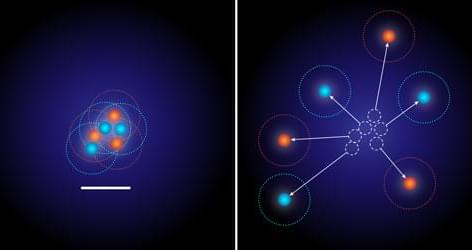A new technique allows the imaging of an atomic system in which the interatomic spacing is smaller than the optical-resolution limit.
To gain in-depth understanding of quantum matter, researchers need to probe it at the microscopic level. Ultracold atoms—ensembles of atoms cooled to near absolute zero—offer an exceptionally clean and controllable platform for exploring collective quantum phenomena. Over the past two decades, researchers have sought to take in situ “snapshots” in which every single atom is individually resolved in position and, when needed, in spin. Recent advances have brought this vision to life and have significantly accelerated our understanding of collective quantum behaviors. Yet an important challenge remains: In a number of situations, the typical spacing between particles is smaller than the resolution limit of conventional optical imaging. Now Selim Jochim and his group at Heidelberg University in Germany have introduced a method to overcome this barrier by making the system “self-magnify” before imaging [1].
